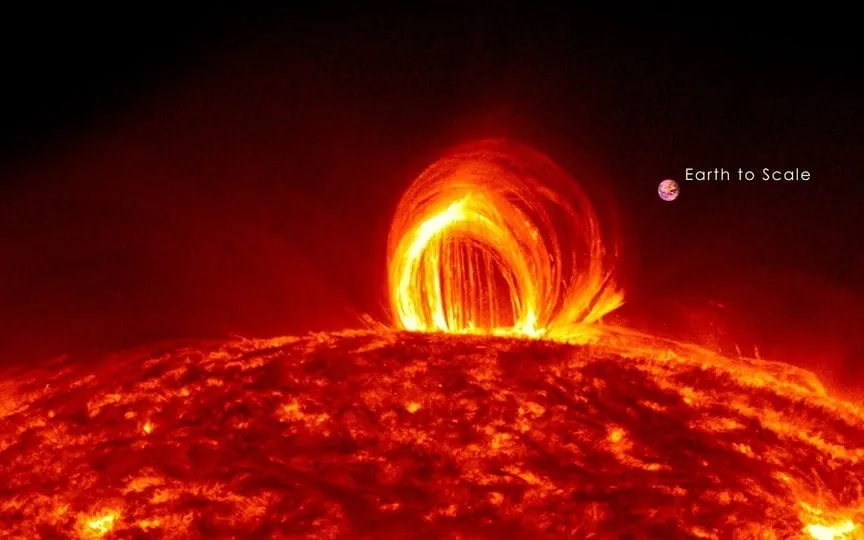Russian Scientists Issue Warning of Potential Communication Disruption Due to Solar Flares
The Fedorov Institute of Applied Geophysics in Moscow has alerted that the solar flares witnessed on July 16, 2023, could presently lead to disturbances in Earth’s communication systems. Russian scientists have cautioned about the likelihood of X-class solar flares, including proton flares, which may disrupt short-wave communications, as per a report from Reuters news agency.
A solar flare occurs when magnetic field lines near sunspots, cooler regions on the Sun’s surface, overlap and release a sudden burst of energy. Of these flares, Class X flares are the most powerful. Flares are classified by their intensity, with B, C, M and X representing increasing intensity. An X-class flare is about 10 times stronger than an M-class and 100 times stronger than a C-class flare.
Disturbances in communication systems and previous “Solar Storm” events
Proton flares are a special X-class flare that expels high-energy protons into space. These solar events can disrupt signal transmission by affecting the upper atmosphere, as noted by NASA. For example, GPS satellites may experience interference during such disturbances.
The Fedorov Institute reports that one of the solar flares observed on July 16 lasted 14 minutes and caused interference in radio communications. This highlights the true impact of these powerful events.
Recently, Earth has experienced significant solar activity. On March 31, 2023, a solar storm caused by a large coronal hole in the Sun’s atmosphere affected our planet. The size of this coronal hole was estimated to be 20-30 times larger than Earth.
Predictive insights and the role of solar flare monitoring
Additionally, on March 24, Earth faced the most severe solar storm in nearly six years. Classified as a G4 geomagnetic storm, this storm could disrupt electrical systems and spacecraft operations. Geomagnetic storms occur when there is a large disturbance in the Earth’s atmosphere caused by the efficient transfer of energy from the solar wind to the surrounding space environment.
In January 2023, a study published in The Astrophysical Journal revealed that solar flares and space weather storms can be predicted to some extent by tracking flashes from the Sun. Scientists from NorthWest Research Associates (NWRA) analyzed data from NASA’s Solar Dynamics Observatory and identified small signals from the upper layers of the solar system. These signals provide valuable information about the regions of the Sun that are more likely to cause flares.
The warnings issued by Russian scientists remind us of the disturbances caused by strong solar flares and the importance of preparation in mitigating their effects on Earth’s communication systems.




